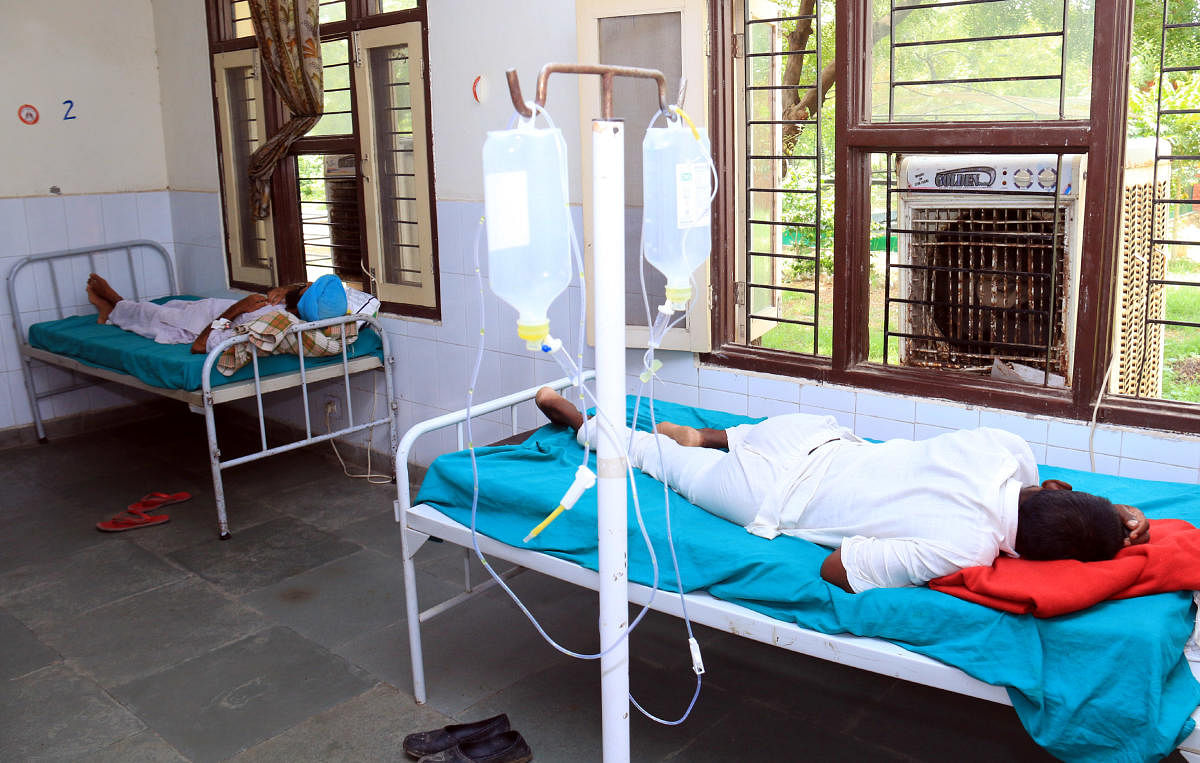
Long queue of drug addicts and their family members at the drug rehabilitation centre at Bhagupur village in Punjab’s Tarn Taran district says it all. Families wait with bated breath. It’s their last resort. After all, it’s agonising to see their kin screaming in the middle of the night for want of drugs, walking wobbly and disoriented all day long, vomiting and stepping towards, perhaps, imminent death.
From nearby villages to such centres, families pool in money to bring their addicted relatives for treatment. Until last year, the government-run Outpatient Opioid Assisted Treatment (OOAT) centres and other de-addiction units would occasionally have addicts turning up for treatment.
Today, they are running at full capacity. Rehabilitation and de-addiction centres don’t have enough space to deal with the unprecedented spike in addicts reaching for treatment.
According to sources, the OOAT centres in Punjab, which started registration in last October, have admitted in excess of 18,000 patients until this August. Out of the total registrations, over 6,500 were done in July. The rise in the deaths of addicts due to suspected drug overdose has created panic. “In 15 days, from July 1-15, the number of registrations for treatment was 5,077 as per the health records,” government sources said.
Families in fear of losing their kin are rushing addicts for treatment. But getting rid of drug addiction is a tedious task.
Consider the case of Hoshiarpur resident Kamaldeep alias Vicky, who died at the age of 37, leaving behind his wife who works as a domestic help, and two minor kids. Vicky tried to overcome the addiction and was admitted to a de-addiction centre. He failed and died a day after he returned from the centre, after weeks of treatment. Drug syringes and capsules were found near his body.
His wife Ramana says she borrowed Rs 4,000 to get her husband admitted to the de-addiction centre at Kapurthala. She brought him home after a three-week course as she did not have the money to continue the treatment for another one month as suggested by the doctors. The very next day after returning from the centre, Vicky, who occasionally worked as a daily wager, told his wife that he was going to look for work. Ramana never saw him again. His body returned home. The 35-year-old widow is now reeling under debt. She has no idea about the future of her two daughters, Tanya and Sanya, and a 7-year-old son, Chandu.
Punjab has as many as 81 OOAT clinics. Officials say the majority of new patients visiting these clinics are synthetic opioid addicts. Most of these patients are labourers.
Punjab recently got its first government-run de-addiction centre in Kapurthala meant exclusively for women. The need for an exclusive centre for women was felt in the wake of the rising number of women addicts. According to a research published in the Journal of Family Medicine and Primary Care, based on a study conducted in 15 villages in Jalandhar district last year, every third person in Punjab is addicted to one or the other form of drugs, other than tobacco.
At the drug de-addiction centre in Ferozepur town, the story of uncle-nephew duo provides weight to government claims of achieving success in treating addicts. Manjit (45, name changed) and his 22-year-old nephew Sonu are undergoing de-addiction treatment at the centre.
Both were consuming chitta for several years, often even resorted to syringes. Sonu says he and his uncle, Manjit, are trying hard to overcome the side effects of de-addiction. But years of drug consumption has left them with the burden of heavy debt. Manjit had borrowed Rs 3 lakh over the years to buy drugs. Family life at home remained in tatters but the two now see a new beginning.
It is estimated that nearly 60% addicts getting treatment at Punjab’s first government-run de-addiction and rehabilitation centre in Amritsar are suffering from Hepatitis C. This is due to the use of infected syringes that are used multiple times to inject drugs by addicts. As per an official survey, around 76% of Punjab’s opioid addicts are aged between 18 and 35 years.
As per a 2017 survey report titled ‘Epidemiology of substance use and dependence in the state of Punjab’ conducted by the Post Graduate Institute of Medical Education and Research (PGIOMER), Chandigarh, there are 78,000 injectable opioid users in the state. Of these, heroin or chitta users account for 61.6%, making it the most common drug.